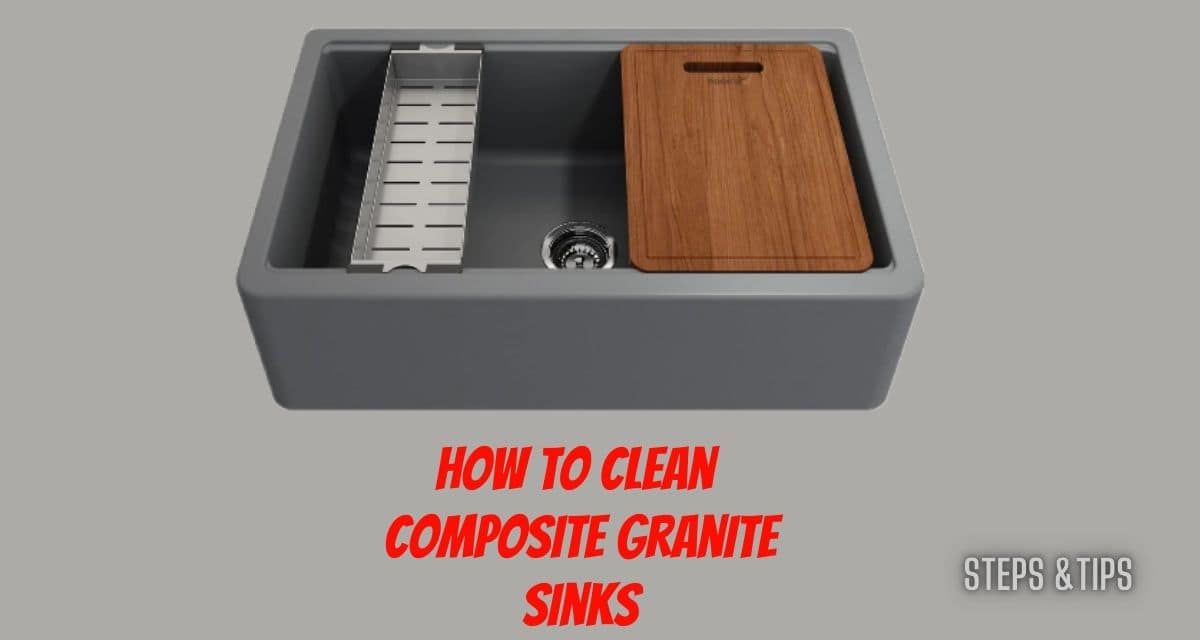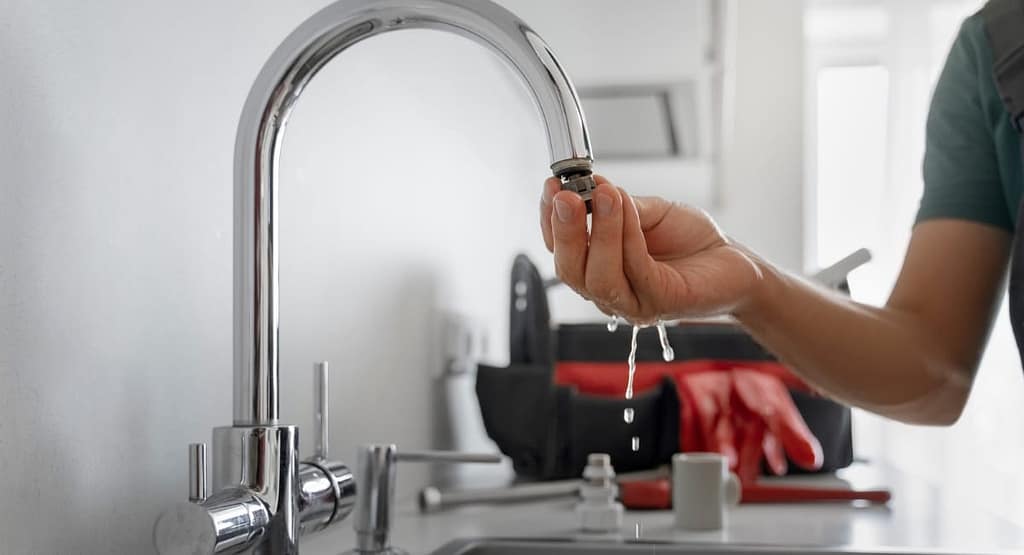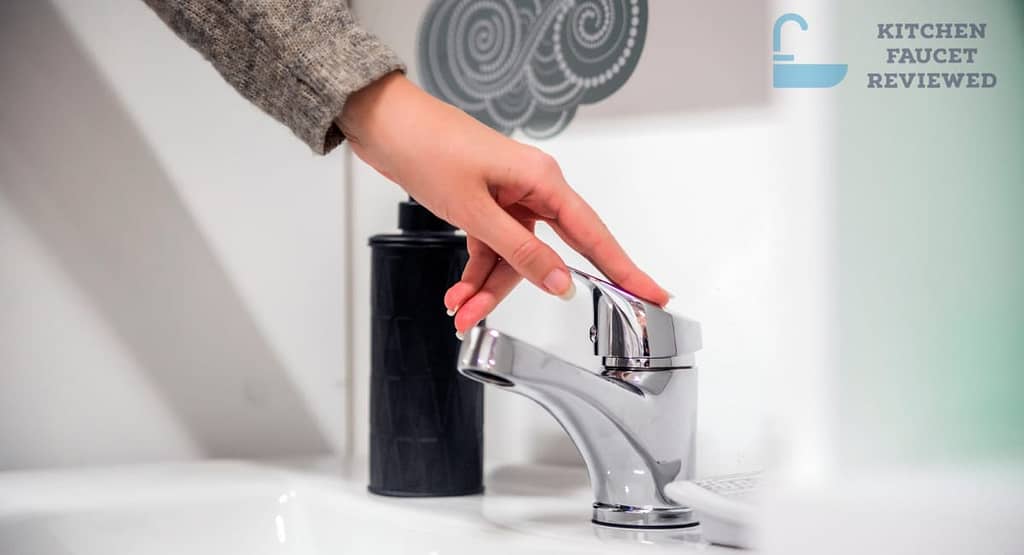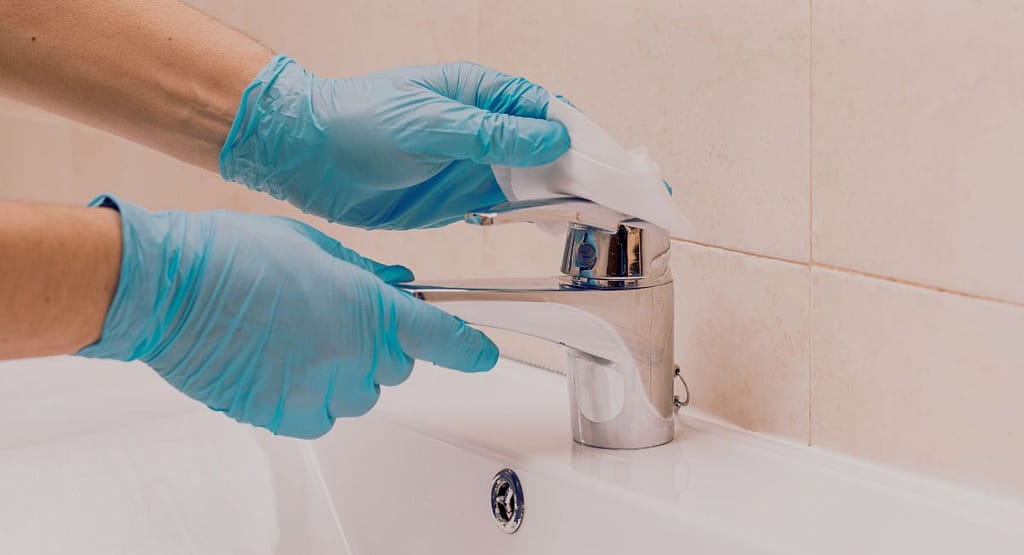How to Clean Composite Granite Sinks?
Composite granite sinks are a popular choice for modern kitchen designs. These sinks are known for their durability and beauty, but they also require proper maintenance to keep them looking their best. In this blog post, we will go over the best ways to clean composite granite sinks and provide tips for keeping them in excellent condition.
What is Composite Granite?
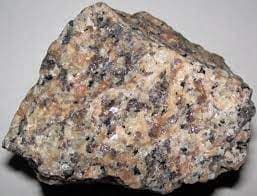
Composite granite is a popular material used in the construction industry, particularly in the kitchen and bathroom segments. It is made by combining crushed granite particles with synthetic resins, pigments, and other additives. This mixture is then poured into molds and cured under high pressure and heat to create a solid, durable material that looks and feels like natural granite.
The primary advantage of composite granite over natural granite is its ability to resist scratches and stains. Unlike natural granite, which is porous and can be easily damaged by acids and chemicals, composite granite is non-porous and resistant to scratches, chips, and stains. It is also easier to maintain and clean compared to natural granite, which requires regular sealing to prevent stains and damage.
Another advantage of composite granite is its versatility in terms of color and texture. Manufacturers can blend different colors of granite particles and pigments to create a wide range of colors and textures, making it easier for designers and architects to match the material with other building elements such as cabinets, countertops, and flooring.
Composite granite also offers excellent heat resistance, making it an ideal material for use in kitchen sinks. It can withstand high temperatures without warping, cracking, or discoloration. It is also hygienic, as it does not harbor bacteria and is easy to clean.
Composite granite sinks are available in different styles and sizes to suit various kitchen and bathroom designs. They are durable, long-lasting, and resistant to scratches and stains, making them an excellent investment for homeowners who want a high-quality, low-maintenance sink.
How to Clean Composite Granite Sinks in 2025?
Cleaning composite granite sinks is relatively easy and straightforward, but it is essential to use the right products and techniques to avoid damaging the surface. Here are the steps to clean a composite granite sink effectively:
Step 1: Rinse the Sink with Water
Rinsing the sink with water is the first and most important step in cleaning a composite granite sink. This is because water helps to remove any loose debris, food particles, and other dirt that may have accumulated on the surface of the sink.
It is recommended to use warm water and a soft sponge for this step. The warm water will help to loosen any dirt and debris, making it easier to clean, while the soft sponge will prevent any scratches or damage to the surface of the sink. Be sure to remove any food particles or debris from the drain to prevent clogs and foul odors.
Step 2: Apply a Gentle Cleaner
Composite granite sinks are becoming increasingly popular due to their durability, low maintenance, and stylish appearance. However, maintaining their shine and preventing scratches requires careful cleaning with the right products. In step 2 of cleaning a composite granite sink, applying a gentle cleaner is crucial to maintaining its appearance and preventing damage.
When choosing a cleaner for composite granite sinks, it’s essential to avoid abrasive or acidic cleaners as they can scratch or damage the sink’s surface. Abrasive cleaners often contain particles that can scratch the surface, while acidic cleaners can break down the composite material, causing it to degrade and lose its shine.
Instead, it’s recommended to use a gentle cleaner designed specifically for composite granite sinks. These cleaners are usually pH-neutral and contain no harsh chemicals that can damage the sink’s surface. Many composite granite sink manufacturers also offer their own line of cleaners that are specially formulated to maintain the appearance and durability of their sinks.
When applying the cleaner, it’s important to follow the manufacturer’s instructions carefully. Typically, you’ll need to dilute the cleaner in water and apply it to the sink’s surface with a soft sponge or cloth.
While this process you’ll have to avoid using abrasive scrubbers or any tool that made of steel as they can scratch the surface. Instead, use a gentle scrubber or a soft-bristled brush to remove any stubborn stains or debris.
Step 3: Scrub with a Sponge or Soft Brush
When it comes to cleaning your sink, using a soft brush or sponge is a crucial step that should not be overlooked. Scrubbing your sink with a gentle yet effective tool is necessary to remove stubborn dirt, grime, and stains that may have accumulated over time.
There are various types of sponges and brushes available in the market, but it is essential to choose the right one to avoid damaging the sink’s surface. Using abrasive scrubbers such as steel wool or hard-bristled brushes can scratch the sink’s surface and leave permanent damage, especially on delicate materials like porcelain, marble, or stainless steel.
Soft-bristled brushes are a popular choice as they are gentle yet effective in removing dirt and stains. They are ideal for cleaning the sink’s corners and edges, where grime tends to accumulate. A toothbrush or a small scrub brush with soft bristles can also be used for hard-to-reach areas.
Another option is to use a sponge. Sponges are versatile and can be used for various cleaning tasks. When choosing a sponge, it is important to select one with a gentle surface that won’t scratch or damage the sink. Natural sponges made from plant fibers or synthetic sponges made from materials like cellulose are great choices for cleaning sinks.
To get the best results, wet the sponge or brush with warm water and apply a small amount of dish soap or a mild cleaner to it. Avoid using harsh chemicals or acidic cleaners that can damage the sink’s surface. Gently scrub the sink’s surface, paying close attention to the corners and edges, and rinse with warm water.
Regularly scrubbing your sink with a soft brush or sponge will not only keep it looking clean and shiny but also prevent the buildup of bacteria and germs. It is recommended to clean your sink at least once a week to maintain its hygiene and prevent any unpleasant odors.
Step 4: Rinse Thoroughly
The process involves rinsing the sink thoroughly with water after scrubbing it with a cleaner. This is an important step to ensure that all traces of the cleaner are removed, preventing any residue from being left on the sink’s surface.
Cleaning the sink is an essential household chore that needs to be done regularly to maintain hygiene and prevent the buildup of dirt, grime, and bacteria. There are several different types of cleaners available on the market that can be used to clean sinks, such as abrasive cleaners, natural cleaners, and chemical cleaners.
Regardless of the type of cleaner used, it is essential to rinse the sink thoroughly after scrubbing it to remove all traces of the cleaner. Failing to rinse the sink properly can leave behind a residue that can attract dirt and bacteria, causing the sink to become dirty again quickly.
There are several benefits to rinsing the sink thoroughly after cleaning it. Firstly, it ensures that the sink’s surface is free from any harmful chemicals or residues that could potentially harm the sink’s material or harm the person using the sink. Secondly, rinsing the sink prevents the buildup of dirt and bacteria, which can cause unpleasant odors and make the sink unhygienic.
When rinsing the sink, it is important to use clean water and ensure that all areas of the sink are thoroughly rinsed. This includes the faucet, handles, and drain, as well as the sink’s surface. After rinsing, it is a good idea to wipe the sink dry with a clean cloth to prevent any water spots or streaks from forming on the sink’s surface.
Step 5: Dry with a Soft Cloth
Drying a sink’s surface after cleaning it is an important step to help maintain its cleanliness and prevent water spots and streaks from forming. Using a soft cloth or towel to dry the sink’s surface is crucial as it will not scratch the surface or leave lint behind.
When water is left to dry on the sink’s surface, minerals and impurities present in the water can form water spots. These spots can be unsightly and can be difficult to remove. In addition, if water is not dried off completely, it can leave streaks on the sink’s surface. These streaks can also be unsightly and can detract from the overall appearance of the sink.
To dry a sink’s surface, start by removing any excess water using a squeegee or a paper towel. Then, take a soft cloth or towel and gently wipe the sink’s surface, making sure to dry all areas thoroughly. Pay extra attention to any crevices or corners where water may have collected.
If you notice any water spots or streaks after drying the sink’s surface, you can try using a vinegar solution to remove them. Simply mix equal parts vinegar and water, and use a soft cloth to apply the solution to the affected areas.
Tips for Maintaining Composite Granite Sinks
Although composite granite sinks are popular due to their durability, resistance to scratches and stains, and overall aesthetic appeal.
But, still you have to maintain the appearance and longevity of your composite granite sink to keep its look good and clean, therefore, we brought some important tips to follow.
- Avoid using abrasive scrubbers, steel wool, or scouring pads: These types of cleaning tools can scratch the surface of your composite granite sink, leading to a dull appearance and even making it more easy for staining in the future. Instead, use a soft sponge or cloth with mild soap and warm water to clean your sink.
- Wipe up spills and stains immediately: Even though composite granite sinks are resistant to stains, it’s still important to wipe up any spills or stains as soon as possible to prevent them from penetrating the surface. This is especially true for acidic substances like citrus juices or vinegar, which can cause discoloration if left on the surface for too long.
- Avoid using harsh chemicals: Bleach, ammonia, and other harsh chemicals can damage the surface of your composite granite sink. Instead, use gentle, non-abrasive cleaning products specifically designed for use on composite granite surfaces.
- Use a cutting board: Composite granite sinks are durable, but they’re not completely scratch-proof. To prevent scratches and gouges from knives and other sharp objects, use a cutting board when preparing food.
- Consider using a sink protector: Sink protectors are specially designed mats that sit at the bottom of your sink and protect it from scratches and dings caused by pots, pans, and other heavy objects. They’re a great investment if you want to keep your composite granite sink looking like new.
Conclusion
Composite granite sinks are an excellent choice for modern kitchens and bathrooms, but they require proper maintenance to keep them looking their best. Regular cleaning with a gentle cleaner and soft brush or sponge can help maintain the sink’s appearance, while following the tips above can help prevent scratches and other damage. By taking care of your composite granite sink, you can enjoy its beauty and durability for many years to come.

